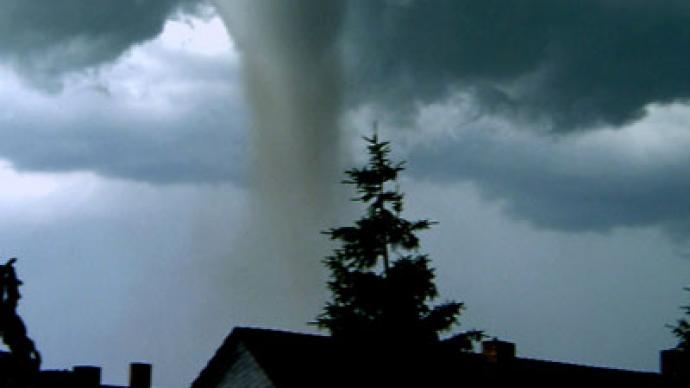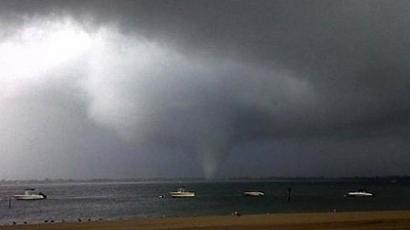Man-made tornadoes may produce green energy

Massive man-made twisters reaching to the skies from cyclopean structures on the ground may be the future of suburban landscape. A Canadian firm is developing the technology to use the tornadoes to produce electricity – and assures it would be safe.
The company, AVEtec Energy Corporation, is working on a proof-of-concept device after winning this month a grant from The Thiel Foundation, a non-profit organization created by PayPal co-founder Peter Thiel. The machine is meant to make a rotating column of air that sucks air from its base like a natural twister.The company already built a four-meter diameter prototype and will now use the grant money to construct a version twice as big, which it hopes will produce a 40-meter tall vortex with a diameter of 30 centimeters.
“Power output increases geometrically with size, so commercialization will become economically viable when we build a 40-meter diameter prototype in 2015,” said Louis Michaud, AVEtec president.The proposed design is not unlike a conventional solar updraft tower, in which the sun heats up air in a large greenhouse-like structure and goes up through a tall chimney in the center. The air convection moves turbines to produce electricity.
The proposed Atmospheric Vortex Engine (AVE) takes a similar approach, but the air goes inside the tower through tangential inlets and forms a tornado. Thanks to the rotation of the air column it remains stable long after rising past the top of the chimney rather than mixing with the cooler ambient air. It can potentially go up as far as 20 kilometers for a vortex with the base diameter of 100 meters generated in a 200-eter diameter 80-meter high tower, the company’s website explains.The height of this “virtual chimney” and the low temperature at its “outtake” in the troposphere means that the process can be sustained with a much smaller temperature difference that what is required for an updraft tower power plant to operate. In fact it does not require a solar collector farm, instead pre-heating the air on the intakes to start the process, the company says.
The initial heat input may come from industrial waste heat (the company says one of the applications of the technology may be simply replacing cooling towers at plants with cheaper twister generators) or from a natural source like the tropical ocean waters – the same that give energy to the natural tornadoes and hurricanes.The big ‘if’ in the technology is whether the man-made twister is able to survive a horizontal wind. This question can be answered only after a larger-scale test, the company says. If the concept proves reliable, it may become one of the cheapest sources of energy costing as low as 3 cents per kilowatt hour, which would also not produce additional emission.Side effects of the technology, if it goes industrial scale, may include producing clouds and rains in a power plant vicinity and making the environment there somewhat cooler. AVEtec assures that an artificial tornado cannot run amok, destroying the plant that produced it and the neighborhood.














